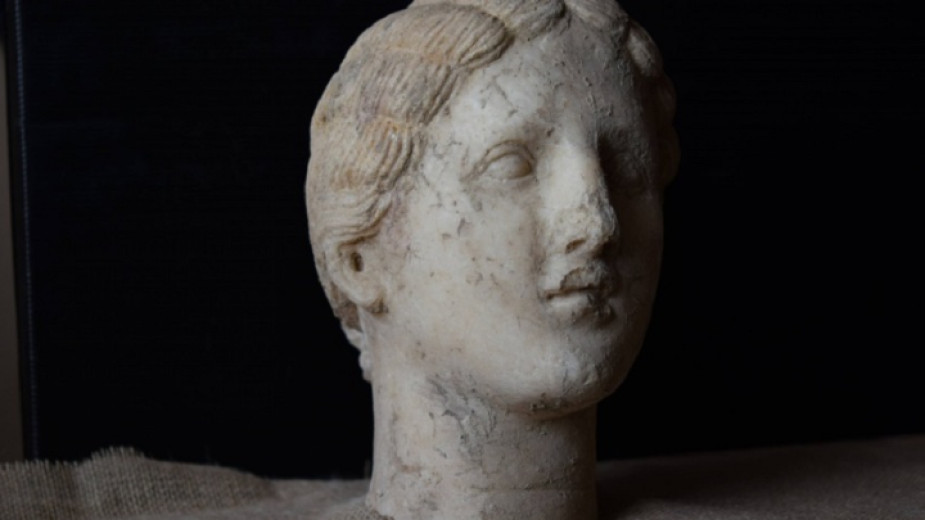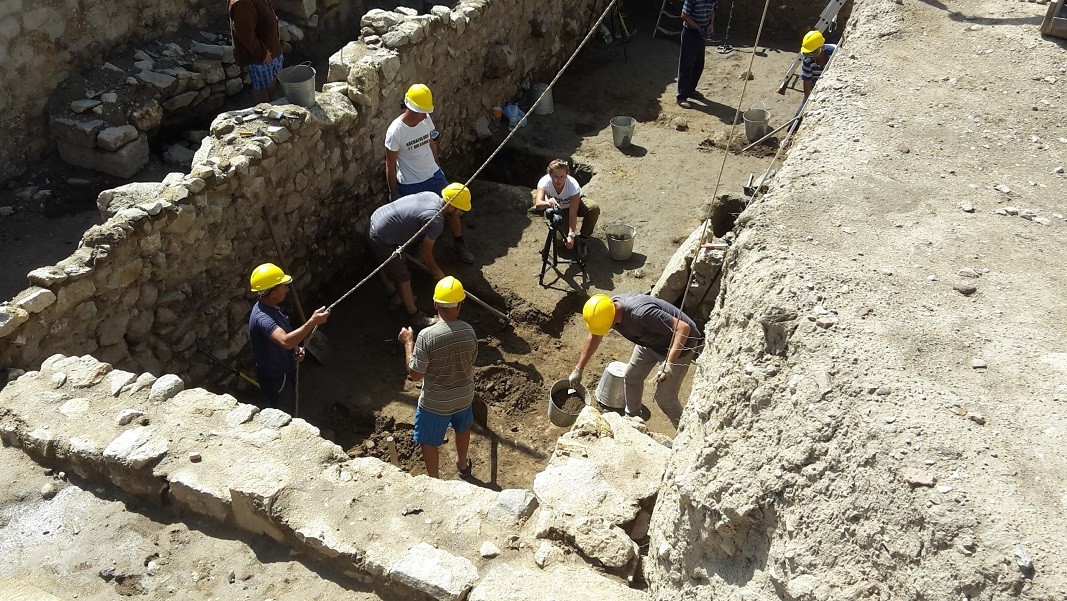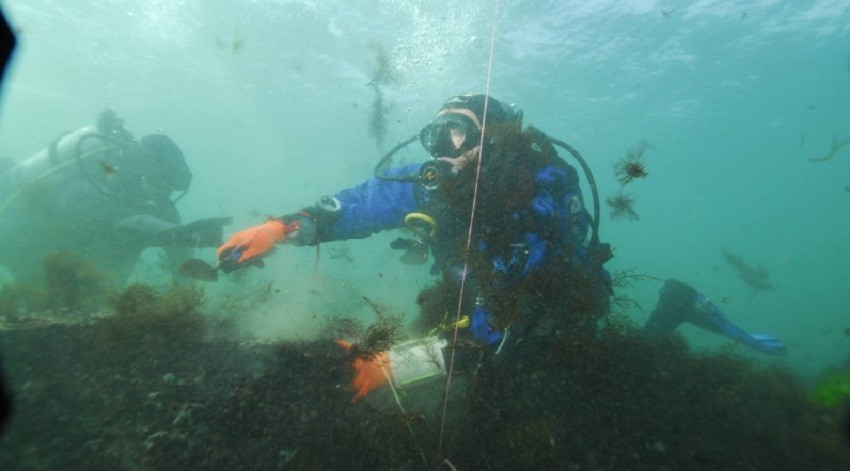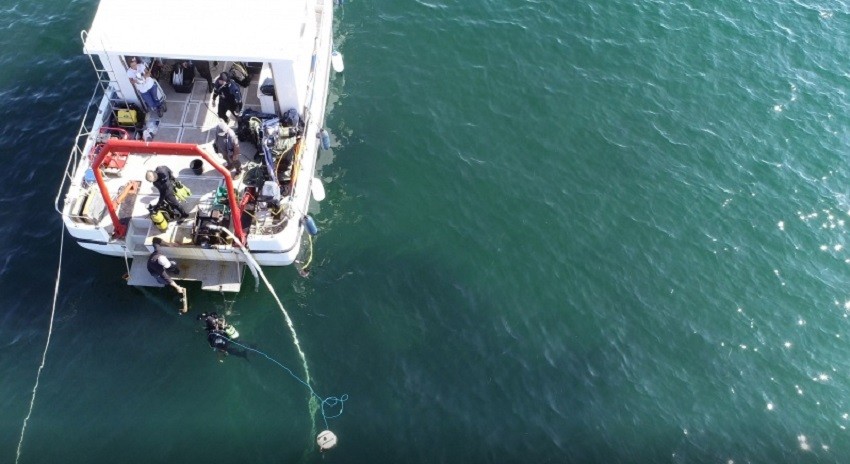
Between the layers of time, in the famous Rupite area near Bulgaria’s town of Petrich, the bowels of the earth have preserved the story of Heraclea Sintica, founded in the 4th century BC. Scholars believe that the foundations of the ancient city have been laid around about the time of Philip II of Macedon, father of Alexander the Great. Therefrom comes the name - “Heraclea” - after Heracles (Hercules), considered the founder of the dynasty. “Throughout the last years, we have been able to reveal a substantial part of the central square and the surrounding areas,” Associate Professor Lyudmil Vagalinski, the leader of the excavation site since 2007, told the Bulgarian National Radio. The archaeologist, being aided by the local government and the Ministry of Culture, is grateful for the possibility to continue research on the ancient city, increasingly becoming a tourist attraction.
 “Our aim is to reconstruct its history,” Assoc. Prof. Vagalinski stresses. “We are not looking for valuable objects - value is relative. Heraclea Sintica was a centre for 800 years. Throughout that time it went through numerous difficulties. After overcoming some enemy attacks, two consecutive strong earthquakes around the year 400 AC destroyed the city and its infrastructure, leaving it moribund. It must have been very difficult for these people to abandon their homes, but nature is mightier than us. We have to realize our fragility and perhaps, therefore, treat life more responsibly, be more honest with ourselves and others.”
“Our aim is to reconstruct its history,” Assoc. Prof. Vagalinski stresses. “We are not looking for valuable objects - value is relative. Heraclea Sintica was a centre for 800 years. Throughout that time it went through numerous difficulties. After overcoming some enemy attacks, two consecutive strong earthquakes around the year 400 AC destroyed the city and its infrastructure, leaving it moribund. It must have been very difficult for these people to abandon their homes, but nature is mightier than us. We have to realize our fragility and perhaps, therefore, treat life more responsibly, be more honest with ourselves and others.”

In history, however, a substantial number of testimonials of distant past times are erased not only by weather conditions and natural disasters. As a result of repeated deepenings, valuable archaeological layers have disappeared from the seabed in the harbour of Sozopol on the Bulgarian Southern Black Sea coast. Fortunately, at the latest rescue excavations, provoked by the plans of the Municipality of Sozopol to build floating piers, archaeologists come upon some yet untouched layers:
“This research is quite interesting since it is conducted in the water territory of the harbour of Sozopol,” explains Kalin Dimitrov from the Centre for Underwater Archaeology. “Evaluated years ago as an area of great merit for underwater archaeology, this water territory is part of Saint Cyricus island (also known as Saints Quiricus and Julietta island) – a small island near Sozopol which has been named a national cultural monument. In the 1980s and 1990s, underwater archaeological explorations made there unearthed some prehistoric settlements. The investment intentions of the Municipality of Sozopol include an area that has not yet been researched and excavated. We were studying some parts of the harbour of Ancient Apollonia, rich in artefacts from the late аrchaic, classical and early Hellenistic period. The volume of materials accumulated in this harbour is indeed impressive.”

The research on the ancient settlement will probably continue in the following year, while currently, the Centre for Underwater Archaeology is planning to apply for financing for three projects. The latter are the annual archaeological explorations, with one them being at the ancient harbour near the Ropotamo river, initialized in 2017. The two other sites are in the water territory of the ancient town of Nessebar and Bulgaria’s Northern Black Sea coast, which has not been researched since the late 1980s.
Photos: archaeologia-bulgarica.com
Edited by Darina Grigorova (based on interviews broadcast on Hristo Botev channel of BNR)
English version Boris Totchev
On 19 October 2025, the day on which Orthodox Bulgarians commemorate St Ivan Rilski the Miracle-Worker, the newly renovated St Ivan Rilski Church in Chicago will officially reopen its doors. Named after Bulgaria’s heavenly patron , the church will host..
Archaeologist Nikolay Ovcharov on Thursday announced the discovery of a large circular temple at Perperikon, the early-historic rock complex in the Eastern Rhodopes, BTA reported. Dating to the 3rd–4th centuries AD , the structure is believed to..
This summer, archaeologists once again breathed life into the legends woven into the rocks of Kaliakra . Among the ruins of the once majestic fortress above the Black Sea, over 400 artefacts were discovered, shedding new light on..

+359 2 9336 661
